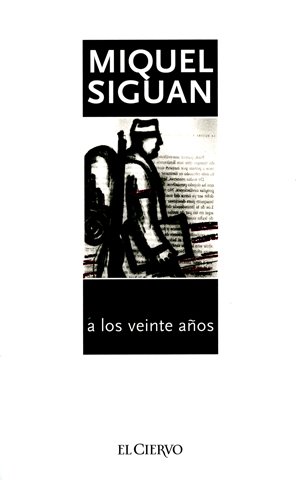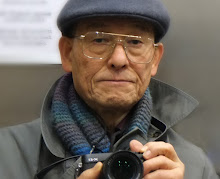スペイン・ロマネスクの旅(22)
サン・ミッシェル・ド・クシャ修道院(Abbey of Saint Michel de Cuxa)
(For the summary in English please see the end of this page)
前回のセラボナ修道院から西に30km、カタルーニャの聖山Canigó(2784m)のふもとにサン・ミッシェル修道院がある。9世紀半ばにベネディクト修道院として創建されたものである。
教会(Church of Saint Michael)
修道院教会は、974年献堂の記録が残るプレロマネスク様式の建物だったが、ウリバ(Abad Oliba)修道院長の時代(11世紀前半)に大拡張工事がなされ、その姿を一新した。身廊30.5m天井の高さ14.4m、三廊形式の堂々たる教会である。
中世を通じて威勢を誇った大修道院ではあるが、フランス革命により教会財産を接収され、建物は荒れるがままに放置された結果、一時は廃墟になってしまった。現在われわれが目にするのは、20世紀になって復元された教会の姿である。
スペインのロマネスクは、ピレネー以北からの輸入文化である。ひとつは北イタリア、特にロンバルディアからカタルーニャに渡来し、もうひとつは、フランスからサンティアゴ巡礼のルートを通じて伝えられた。
ウリバ修道院長は、ロンバルディアから熟練した工匠を呼びよせ、カタルーニャでは初めてという、38mの高さを持つ巨大なふたつの鐘塔を築かせた。北側の塔は19世紀に崩れ落ち、げんざい残っているのは南側の一塔のみ。
クシャ修道院は、11世紀初頭の大改修に際しロンバルディア様式を採用したことで、カタルーニャにおけるその後のロマネスク教会建築に大きな影響を与えることになった。
Photo(4)Bell tower
地下礼拝堂(Crypt)
1030年ころに築かれた円形のクリプトは、イエス生誕の場を象徴する「まぐさ桶の礼拝堂」と呼ばれている。カタルーニャのクリプトは小さなものが多い中で、この円形クリプトは直径9mとのことだが、ずいぶん大きく感じられる。ウリバによる大改装の遺産のうち、よく原型を保つ形で保存されているのが、このクリプトである。
トリビューンTribune
セラボナ修道院のトリビューンに似たものが、クシャにもあったらしい。16世紀に取り壊されたというが、そのアーチと浮彫の断片のいくつかが、教会堂から回廊に抜ける扉口を飾っている。
クシャのトリビューンに取り組んだのは、セラボナを手掛けたと同じ工匠たちであったという。まずクシャで腕試しをしたうえで、セラボナで一大傑作を残したものらしい。なお同じ工匠たちの手になるトリビューンの柱頭彫刻が8個残っていて、20世紀に回廊を復元した際、それらの柱頭彫刻が活用された。
回廊(Cloister)
回廊は1130年ころに築かれたものと考えられている。下の写真で、左手の教会につながる部分が南側(29m)、正面が西側(38m)にあたる、規模の大きい変形四辺形の回廊である。
柱頭彫刻は合計63個あったが、うち36個が20世紀初頭に流出し、いまはニューヨークの*クロイスター美術館(The Cloister)にある。なお回廊を修復した際、トリビューンの柱頭彫刻8個を加え、合計35個の柱頭彫刻で再構成された。
回廊の修復は、各地に散在していた彫刻などもかき集め、1950年代に完成した。クシャ修道院の柱頭彫刻の特徴は、セラボナ修道院と同じく絵柄として聖書の物語がほとんど目につかないことで、ライオン、鷲、植物文様などが、大胆にデフォルメされて彫り込まれている。物語りを絵解きするような、13世紀以降の柱頭彫刻には見られない、シンボルの持つ力強さを秘めた作品が多い。
(クロイスター美術館(The Cloister)については下記のBlog記事参照)
Photo(12)Capital-Lions
Photo(21) Man and Eagles(capital from the Tribune)
クシャ修道院から南に目を向けると、正面にすこし雲をかぶったカニゴ山の美しい頂きが見える。5月半ばの写真。
Photo(22)View of the Mount Canigó
ウリバ修道院長(Abad
Oliba)
カタルーニャのロマネスクについて語るとき、必ず引き合いにだされるのがウリバ修道院長(971-1046)である。カタルーニャ北部のセルダーニャ・バザルー伯ウリバ・カブレタの三男として生まれ、1002年にリポイ(Ripoll)のサンタ・マリア修道院に入ったのが31歳、1008年に修道院長となり、1009年にはクシャ修道院長を兼任、さらにはビック(Vic)司教まで兼任(1018年)した。
修道院長・司教として、クリュニーに始まる修道院改革をカタルーニャで実行に移すとともに、多くの修道院や教会の新築・改修の先導役となった。またその一方で「神と平和の休戦」運動を推進するなど、中世カタルーニャの宗教・政治史に残る超人的な役割を果たした人である。
スペイン・ロマネスクの時代、すなわち11世紀から13世紀にかけてのイベリア半島は、「レコンキスタ」と称するキリスト教領主の領土拡張戦争にあけくれる、戦国時代であった。ウリバよりすこし時代は下るが、エル・シッドと呼ばれるロドリゴ・ディーアス(1043-1099)が、傭兵の長から一気にバレンシア国王を名乗る身分に駆け上がった時代、腕っぷしの強いものが成り上がることのできた時代であった。文字の読めない武将もけっこういたという。そして、貴族といってもいざいくさとなれば、命がけで先頭に立たざるを得ない立場であった。
ウリバはそんな貴族の地位よりも、自らの能力を存分に発揮できるのは、神に仕える道であると判断したのではあるまいか。「ウリバは貴族の地位を捨て修道院入りした」というとき、あえて優雅な貴族生活を捨て、清貧に甘んずる人生を選んだかの印象を与えるが、実は西欧世界から見ればしょせん地方の一豪族にすぎない、バザルー伯などの地位には収まりきらない、大きな人物だったということではないのだろうか。
一方で、カタルーニャ史の冒頭に必ず登場する、バルセロナ伯ギフレ(Guifré 840-897)を曾祖父に持つ出自が、ウリバがカタルーニャの宗教界でエリートの階段を駆け上がるための追い風になったことも、まちがいないであろう。11世紀のセルダーニャ伯の名前を記憶している人は少ないが、ウリバの名前は時代を越えて、歴史に刻み込まれているのである。
ウリバは1046年に75才で没するまでの38年間、クシャの修道院長を務めている。特にクシャに愛着を感じていたのであろう。13世紀半ばころの記録によると、西欧世界の平均年齢は40-45才であったとのこと(『中世の森の中で』堀米庸三編)。ウリバが11世紀半ばに75才で亡くなったということは、現代の平均年齢80才に換算すると、130才を越える長寿を全うしたことになる。まさに超人的な体力と知力に恵まれた人だった。
(補足)
1)Olibaの日本語表記は、スペイン史関係の著作ではウリバに統一されているので、それに従った。カタルーニャ語のOはアクセントが来ない場合、ウに近い発音になるからである。
2)「ピレネーの南」と名付けたBlogで、しかも「スペイン・ロマネスクの旅」シリーズの中に南フランス・ルション地方のロマネスク教会を含める理由は、昨年12月の「スペインロマネスクの旅(18)(フノラールの聖マルティン教会 - Saint-Martin-de-Fenollar)」の記事で述べたが、この地方は17世紀半ばまでカタルーニャ領であり、ロマネスクの時代にはまさしくCataluña del Norte(北カタルーニャ)であった、という事情を勘案してのことである。
(Summary in Englsh)
Church of Saint Michael
The abbey church of Saint Michael had been a pre-Romanesque style building dedicated in 974, but it underwent a major expansion under the reign of Abbot Oliba during the first half of 11th century. It has a nave of 30.5 meters long with a ceiling 14.4 meters high.
Although the abbey kept a powerful place throughout the Middle Ages, the French Revolution led to the confiscation of the church property, and the building was left in disrepair, resulting in its temporary ruin. What we see today is a church that was restored in the 20th century.
Romanesque in Spain is an imported culture from north of the Pyrenees. The first came to Catalonia from northern Italy, particularly Lombardy, and the second from France via the pilgrimage route to Santiago.
At the time of expansion of the pre-Romanesque church Abbot Oliba brought skilled craftsmen from Lombardy to build the two huge bell towers, each 38 meters high, firsts in Catalonia. The north tower collapsed in the 19th century, and only the south tower remains.
Adoption of the Lombardian Romanesque style by the monastery of Cuxa in the early 11th century had a great influence on later Romanesque church architecture in Catalonia.
Underground Crypt This circular crypt, built around 1030, is called the "Chapel of the Manger," symbolizing the birthplace of Jesus. Many of the crypt in Catalonia are small but this circular crypt, with a diameter of 9 meters, seems big.
I was impressed by the elegant face of the small statue of Mary, which was placed gently on the wall of the apse.
This statue of Mary used to be in the church of
Corneilla de Conflent, but was returned to the church during the restoration
work in the 1950s.
According to the legend, during the French
Revolution, a woman of Corneilla de Conflent witnessed the statue being almost
thrown into the fire by revolutionaries and shouted, ‘’Oh, Mary! ‘’ The men thought
better of it and handed the statue of Mary to the woman.
Tribune There existed a tribune in Cuxa similar to the one in Serrabona Monastery. Unfortunately it was destroyed in the 16th century, but fragments of it, arch and some relieves are displayed at the door from the church to the cloister.
It is believed that the same workshop did the tribune of Cuxa who worked later at Serrabona. They first tested their skills at Cuxa and then left a great masterpiece at Serrabona. The eight capitals from the tribune survived and they were used at time of reconstruction of the cloister.
Cloister The cloister was built around 1130. In the photo(10) below, the left part which is next to the church is the south side (29m) and in front is the west side (38m) of the cloister. It makes a irregular quadrilateral。
Originally there were a total of 63 capitals, but 36
of them were sold in early 20th century and are now at The Cloister Museum in New York.
When the cloister was restored during 1950s, it was
reconstructed with a total of 35 capitals including eight from the tribune.
Abbot Oliba
When we talk about Romanesque in Catalonia, Abott Oliba (971-1046) is always mentioned. He was born in northern Catalonia as the third son of Oliba Cabrerta, Count of Cerdanya-Besalu. He entered the monastery of Santa Maria in Ripoll in 1002 at the age of 31. Later became the abbot in 1008, and at the same time assumed the abbot of Cuxa in 1009, and even bishop of Vic in 1018.
As abbot and bishop, he advanced monastic reform in Catalonia, which was started in Cluny. He also advanced building and renovating of many monasteries and churches. Abbot Oliba also promoted the "Truce of Peace with God" movement, thus playing a very important role in the religious and political world of Catalonia during the early part of the 11h century.
























